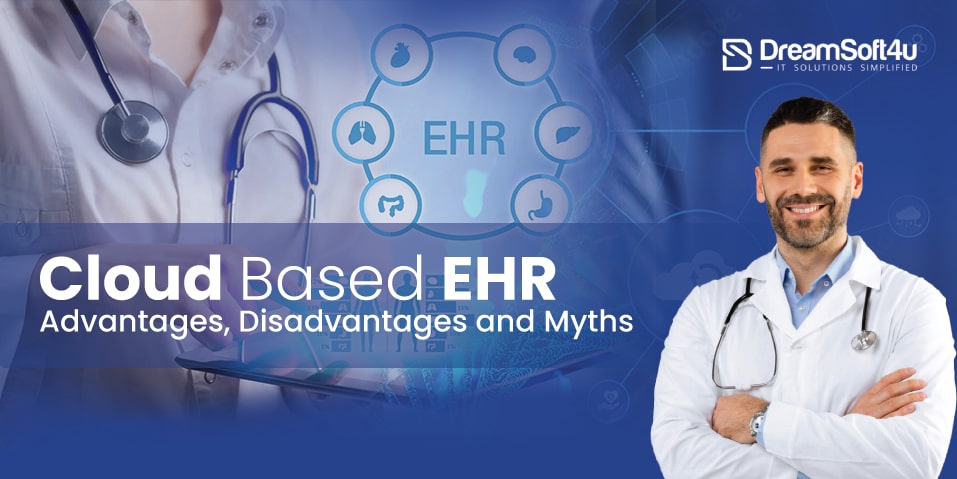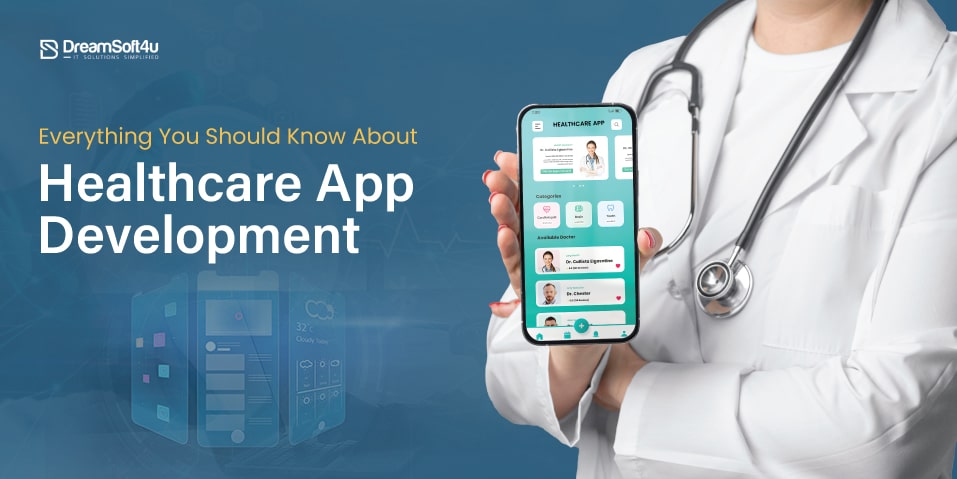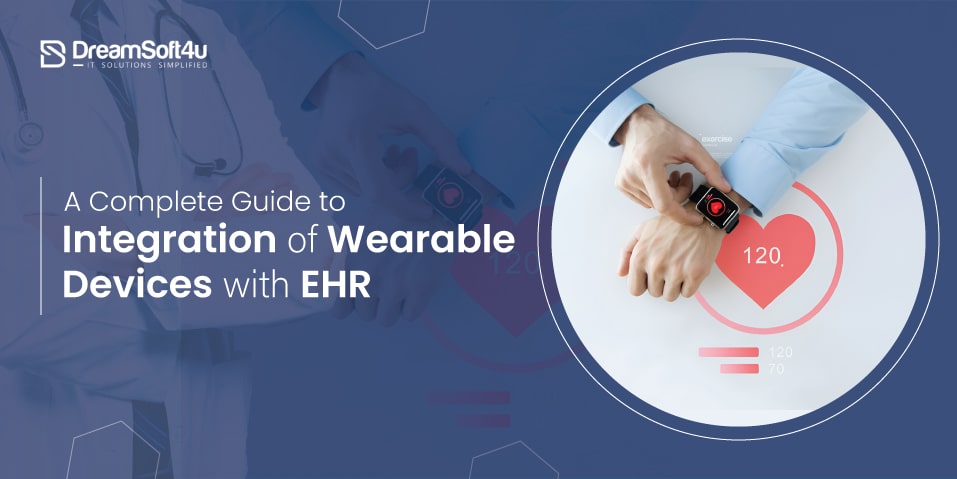Cloud based Electronic Health Records (EHR) is designed to streamline medical records, provide convenient access to patient information, and facilitate contact between doctors and patients.
Data from a procedure is maintained on remote servers in a cloud-based environment and can be viewed via the network, needing only a computer with an internet connection.
As SaaS models, cloud-based EHR system are normally provided to medical practices providing web-based connectivity from wherever a practitioner can access the Internet.
Table of Contents
ToggleAdvantages of Cloud Based EHR
The following points outline the benefits of cloud-based EHR software:
1. Privacy
Patient data stored and handled using the cloud-based EHR system is subject to the same privacy legislation as standard health records. And they’re more secure in several respects. Through using a cloud-based EHR, practices no longer need to think about maintaining sensitive patient records on their own computers. Instead, they focus on the expertise of a provider to safeguard data on a consolidated server. In addition to providing anonymity, EHRs allow doctors and medical professionals to manage who has access to confidential documents. Physicians can only pass data freely to others who have permission to see them by controlling who has access to such information.
2. Reduced startup costs with cloud based EHR
A big challenge to a small practice is the expense of starting up a client-server EHR system. Start-up costs will be up to $40,000 and that is only for a single practice. That’s a big chunk of their profits over an average of three physician practices. Losing the practice may cripple and could even cause it to go out of business.
This would not be an issue with the cloud-based EHR framework, as activities would benefit from economies of scale. In addition, because services and workflows are applied to the cloud, the mechanism is quick and fast, which means that redundant costs will be reduced or removed, rather than client-server(which would entail being on location).
3. Superior collaboration and accessibility
On any computer with a reliable Internet connection, cloud software users can easily log in to the system from anywhere. Outside the workplace, accessing the system allows doctors, staff, and patients to collaborate more efficiently and to achieve greater coordination of treatment.
4. Increased Efficiency and Productivity
Providers globally spent a lot of time sifting through records since the advent of cloud-based EHRs and identifying appropriate evidence to provide quality health care. There used to be room for unexpected errors that adversely affected the quality of medical services and caused delays as well. Cloud-based EHRs also helped improve performance and made it easy for providers during the workday to reach optimum productivity.
5. In a cloud-based system, scalability is streamlined
Without the standard IT growing pains, small practices are able to expand. A web-based EHR system allows introducing new users, physicians, or locations simple. Web-based software’s simplicity helps small practitioners to dream large and expand without breaking the bank.
Read More: On Demand App Development All You Need To Know
Disadvantages of Cloud Based EHR
The following points outline the disadvantages of cloud-based EHR software:
1. Less control
While the cloud-based EHR system is intended for the healthcare institution to be more accessible and straightforward, all diagnostic data from the patient will be managed by the provider’s host. The supplier would also be given total jurisdiction over the backups and security. Moreover, inside a cloud-based system, there is much less customization.
2. Fewer customizability opportunities
Since SaaS solutions are cloud-based EHRs, they cannot be conveniently personalized. If specialization is required, a customer may migrate to a more advanced range of services.
3. Inaccurate data
If an EHR is not updated promptly, anyone who sees the EHR will get erroneous or missing information as soon as new information is gleaned, such as after an inspection or when test results come in. This may lead to future failures in diagnosis, medication, and health outcomes, not only by the issuing doctor but also by all physicians, pharmacists, physical therapists, or personal trainers involved in the patient’s care
Read More: How Much Does it Cost to Make the Best Dating Apps Like Tinder?
Common Cloud-Based EHRS Security Myths
1. Cloud-based Applications are more vulnerable to malware and viruses
If you’ve ever downloaded a malicious file, you know that malware and viruses are real threats to your machine. But the good news about cloud-based EHRs is that viruses, not cloud-based servers, mainly infect end-computing machines.
2. It is one size fits all solution
Each business comes with its own set of requirements and issues. It means that the cloud-based EHR that worked for the business of your friend could not give you the same results. For this purpose, depending on their requirements, scale, and specialty, cloud-based EHR systems provide various solutions for different organizations. It will also rely on what type or level of support you want for your business. You do not need to go all out on the security packages if you already have an in-house IT department. However, you need the additional layer of security for optimal data protection for most organizations in the healthcare industry.
3. No customization
For a variety of cloud-based EHRs, this isn’t the case. From flipping between and/or merging narrative and form-based note-taking techniques to color-coding the patient scheduler, many systems allow users to customize a variety of elements.
4. EHR systems are all similar
There are substantial variations, in fact, between EHR systems. The selection of an EHR solution for the practice of an individual physician will make the difference between smooth implementation and training time spent and acclimatization to the new system. Furthermore, an EHR system should be chosen that allows the doctor the ability to coordinate treatment with other providers and communicate with patients seamlessly and safely.
5. All EHR systems can interact with each other
Due to discrepancies in system architecture and database servers, many EHRs are not able to communicate with one another. New standards such as Direct Protocol allow EHR systems to exchange information, but these norms have been adopted by only a handful of EHRs. Most systems are only capable of exchanging information using the same device with other providers.
Let’s Talk
Ready to discuss your healthcare IT needs? Reach out to DreamSoft4U- the best software development company in the USA. We’re here to simplify, not complicate.
Ready to Build Your Own Cloud-based EHR?
7 in 10 hospitals are planning to switch from on premise to cloud-based EHR. Are you one of them? If yes, then we have got you covered with a roadmap that is both easy to implement and cost-effective.
Our EHR EMR solutions are Benefit-Oriented:
- Boost efficiency by 30% and save time.
- Go paperless and access patient data securely, anytime, anywhere.
- No upfront costs; our flexible cloud solution grows with your practice.
Why Us?
- Decades of Experience: With over 20 years in the industry, we bring a wealth of experience to cloud-based EHR development.
- Tech Expertise, Plain and Simple: Our team excels in the technical aspects while keeping communication clear and straightforward—with no unnecessary complexity.
- Proven Track Record: We’ve successfully helped more than 10 clients implement their cloud-based EHR systems, showcasing our reliability and expertise.
- Cost-Effective Solutions: Our focus is on delivering real value. Clients not only save money but also experience improved operations for enhanced efficiency.
The Tech Essentials:
- Data Security: We treat your data like a treasure chest.
- Smooth Integration: Making sure all your systems work together seamlessly.
- User-Friendly Design: No fancy tricks, just easy-to-use interfaces.
- Top-Notch Security: Your patient info is safe and sound.
- Future-Ready: Building something that’ll grow with you.
Get A Best Healthcare IT Solutions
Your one-stop healthcare IT solution! For EHR, Telehealth, or any other needs.
FAQs
Q1. How long does it take to build a cloud-based EHR?
The timeline varies based on your needs. We’ll discuss specifics to give you a realistic timeframe.
Q2. What influences the cost of developing a cloud-based EHR?
Costs depend on features and customization. We’ll provide a detailed estimate once we understand your requirements.
Q3. Which cloud services do you recommend?
We usually work with AWS, Azure, and Google Cloud. We’ll guide you based on your needs.
Q4. How do you keep patient data secure in the cloud?
Security is a top priority. We use encryption, access controls, and regular audits to protect patient information.
Q5. Can the system grow as per needs?
Absolutely. We design it to scale smoothly with your growth.
Q6. Is the EHR user-friendly for both professionals and patients?
Yes, simplicity is key. We design interfaces with everyone in mind for an easy experience.
Q7. How do you handle moving our data to the new EHR?
We have data migration expertise as well. We’ll plan a seamless transition to keep things running.
Q8. Can we customize the EHR to match our workflow?
Absolutely. We’ll tailor it to fit your unique setup.
Q9. What support do you offer after the system is live?
Our support doesn’t stop. We’re here for updates, maintenance, and any future tweaks you might need.
Q10. Can we discuss flexible payment options?
Definitely. Let’s talk about your budget, and we’ll figure out a plan that works for you.











